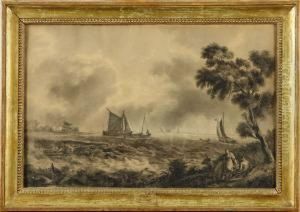Gustava Petronella Stenhoff Paintings
Gustava Petronella Stenhoff, born on October 4, 1869, in Finland, was a pioneering sculptor whose work was instrumental in the development of Finnish sculpture. Stenhoff's life and career spanned a transformative period in the arts, coinciding with the rise of national romanticism and modernism in Finland.
Stenhoff's formative years were marked by a cultural awakening in Finland, which at the time was a Grand Duchy under Russian rule. Finnish identity and the arts were becoming increasingly important vehicles for national expression. Against this backdrop, Stenhoff's artistic inclinations were nurtured, and she developed a strong interest in sculpture.
She pursued her artistic education in Helsinki, where she studied at the Finnish Art Society's drawing school. Recognizing a need to further her skills and knowledge, Stenhoff traveled to Paris, a global center for the arts, to continue her studies. Paris in the late 19th and early 20th centuries was a hub of artistic innovation, and it was there that Stenhoff was exposed to the latest developments in sculpture and had the opportunity to study under prominent sculptors of the era.
Throughout her career, Stenhoff's work was characterized by a dedication to naturalism and an exploration of Finnish themes. Her sculptures often depicted figures from Finnish history and mythology, contributing to the burgeoning sense of Finnish national identity through the arts. She was known for her ability to capture emotion and movement, imbuing her work with a sense of life that resonated with audiences.
Stenhoff's contributions to Finnish art were recognized by her contemporaries, and she became a respected member of the Finnish art community. However, like many women artists of her time, her work was often overshadowed by that of her male counterparts, and she did not receive the same level of acclaim as some of her peers.
Gustava Petronella Stenhoff passed away on November 7, 1927. Her legacy lives on through her sculptures, which continue to be admired for their beauty and historical significance. Today, her work is recognized as an important part of Finland's artistic heritage, and she is celebrated as a trailblazer for women in the field of sculpture.
